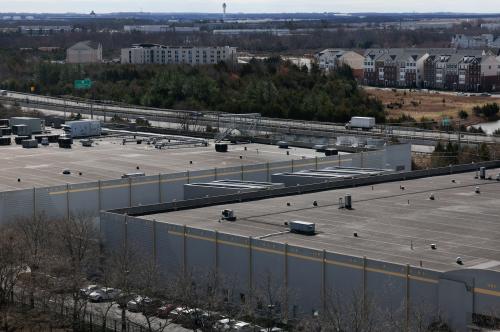The nuclear disaster at the Fukushima nuclear plant in Japan has dramatically demonstrated the interdependence between the countries of Northeast Asia. This crisis poses a palpable threat to Northeast Asia, and is not an issue of military conflict, but rather of environmental pollution as radioactive materials spread across national frontiers. It is an example of a number of transnational issues that can be addressed effectively only through cooperative actions. It is hard to find any positive thing to be said about this disaster except to express the hope that this common threat can rally Northeast Asia to recognize that degradation of the environment is an immediate threat. If it can lead the nations of Northeast Asia to divert more of their budgets to non-traditional threats, it could be a unique gift presented by this crisis.
The massive release of radioactive material is a serious threat with implications for all of us and requires renewed examination of nuclear safety globally, not just in Japan.
The countries in Northeast Asia are heavily dependent on nuclear power. China already has 13 power reactors and 25 more are being built. Others are planned. In Japan there are 50 main reactors. There are 21 nuclear reactors in South Korea. North Korea has one. Given this concentration of reactors in areas where earthquakes and other natural disasters have happened fairly frequently, it would be prudent to consider whether additional safety measures are called for.
The full support of the entire international community is needed to address nuclear reactor safety. Top experts from around the world should be mobilized to discuss how radioactivity from damaged reactors can best be contained. International research teams should work around the clock to develop new systems to prevent and respond to similar crises.
We need full funding support to quickly make the solutions proposed viable. There are two possible avenues for progress in this area: one is the Nuclear Security Summit scheduled to meet in Seoul in 2012; the other is to proceed within the framework offered by the Six-party Talks.
This process should and can be started without delay in Northeast Asia. The six-party talks, aimed since 2003 at solving the North Korean nuclear issue, offers a ready-made forum for such a regional conference in Northeast Asia with the participation of Japan, China, North and South Korea, Russia and the United States. There is a specific working group on economy and energy ready to tackle this issue. European expertise could be utilized in the process. If those talks are not reinstated soon, a forum might be found within the framework of preparatory work for the Seoul Nuclear Security Summit.
Although the main target in the talks should be urgent development of a regional energy safety system, in the longer run what should emerge is a fully developed regional energy system. The ultimate goal should be a Northeast Asia Energy Development Organization including all the countries of the region. This proposal, and how to realize it, could be discussed in the run-up to the Seoul Summit. The President of South Korea already has suggested that North Korea participate in the Seoul Conference. It would be natural to invite North Korean energy experts to participate in the preparatory talks if an item such as is suggested here were on the agenda.
A version of such an organization was established in 1995 as the Korean Peninsula Energy Development Organization (KEDO), in which the EU also participated, to fulfill the 1994 US-DPRK Agreed Framework. It was founded by Japan, South Korea and the United States. KEDO was terminated in 2006 after evidence of uranium enrichment activities in North Korea was revealed. Finland was the first general member of KEDO.
A new and more comprehensive energy organization should include China, Russia, Japan, the United States, the ROK and the DPRK. The EU might also participate in some fashion. The mandate should be to promote energy security and safety in Northeast Asia and contribute to economic development. It should have a standing secretariat; broad oversight should be provided by a Council of Ministers. The European Atomic Energy Community’s charter suggests some relevant missions.
The provision of nuclear fuel services could be multilateralized within this framework, allowing the sharing of both North and South Korea in the ownership and the output of one or more nuclear fuel service facilities in China, Russia, and Japan. The condition must be, of course, that the DPRK re-commits to the Non-Proliferation Treaty (NPT), including its status as a non-nuclear weapon state. And that means a confirmed dismantling of its nuclear weapons program.
The European post-war experience of the European Coal and Steel Community (ECSC), founded in 1951, has lessons which may be useful in the present situation. The insight of French Foreign Minister Robert Schuman and his intellectual collaborator, Jean Monnet, was that if Franco-German production of coal and steel were placed under a common High Authority, it would plant the seeds of peace between Germany and France. Today’s European Union traces its origins to Schuman’s declaration of May 9, 1950, celebrated today as “Europe Day”.
We can turn the disaster in Japan into a process towards a new era of peace and security in Northeast Asia.
The Brookings Institution is committed to quality, independence, and impact.
We are supported by a diverse array of funders. In line with our values and policies, each Brookings publication represents the sole views of its author(s).



Commentary
The Fukushima Disaster Opens New Prospects for Cooperation in Northeast Asia
June 28, 2011